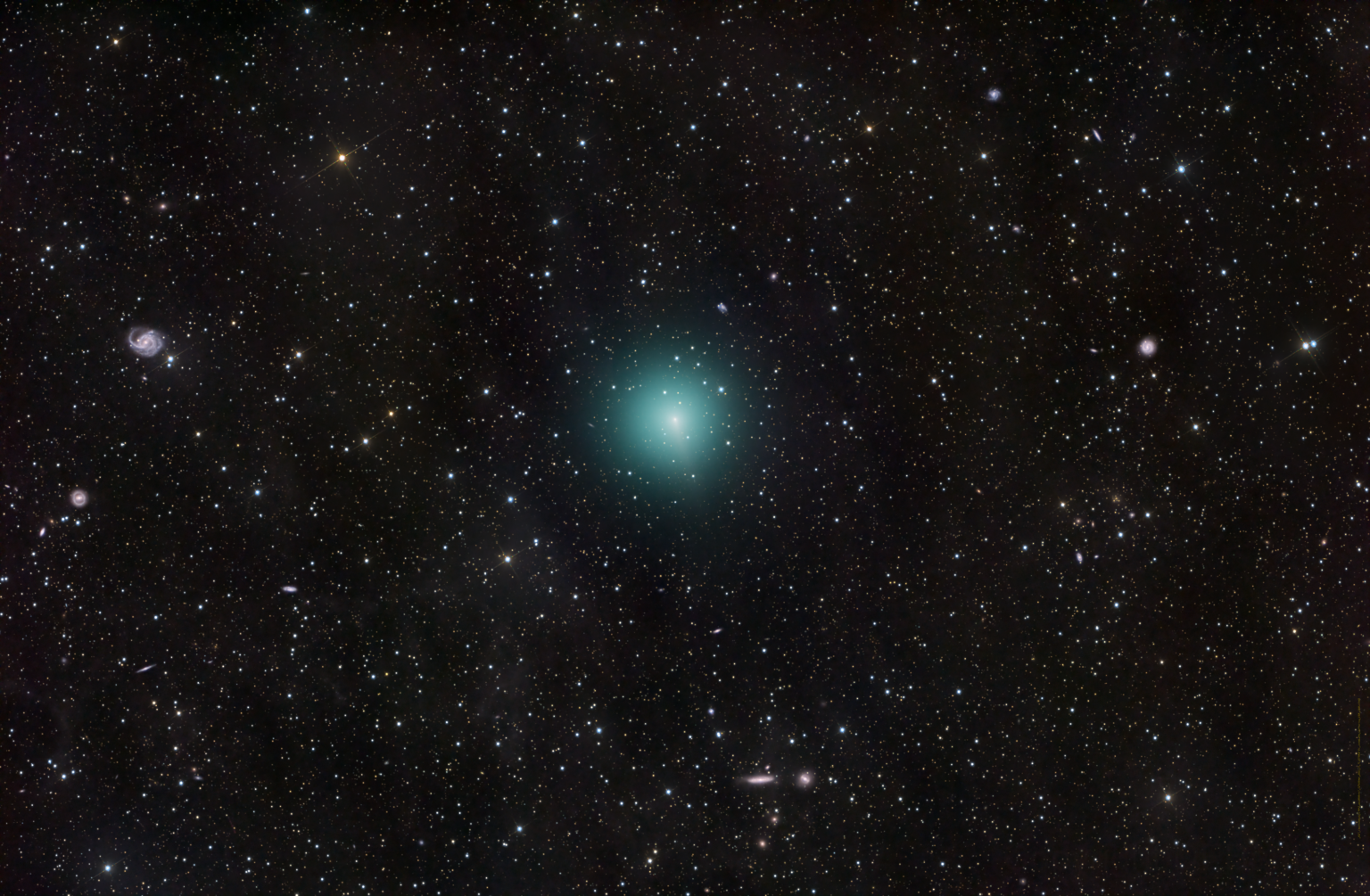The first month of the new year is marked by good conditions for observations of comet Tsuchinshan-1, which passed perihelion on December 25 and will approach the Earth throughout January to eventually fly away from us at a distance of less than half an astronomical unit. This will be the closest approach to it since its discovery in 1965.

Other astronomical events will take place “according to plan”. On January 3, the Earth will pass perihelion, and the next day it will cross the densest part of the Quadrantid meteor shower. In the middle of the month, there is a period of not very successful morning visibility of Mercury: on January 12, the smallest planet will be in maximum western elongation, and on the 27th, it will enter into close conjunction with Mars, which will appear shortly before from behind the Sun. Venus will also be observed before dawn, while the giant planets will “cluster” in the evening sky.
January 1
- The Moon is at its apogee, 404,910 km from the center of the Earth
January 3
- The Earth is at perihelion, 0.983 AU (147.1 million km) from the center of the Sun
January 4
- The Moon is in the final fourth phase
- Maximum activity of the Quadrantid meteor shower (up to 50 meteors per hour)
January 5
- The Moon is 1° north of Spica (α Virginis, 1.0ᵐ)
January 8
- The Moon is 5° west of Antares (α Scorpio, 1.0ᵐ)
- The Moon is 8° south of Venus (-4.0ᵐ)
January 9
- The Moon is 8° south of Mercury (-0.2ᵐ)
January 11
- New Moon
January 12
- Mercury is at its greatest westerly elongation (23.5° from the Sun)
January 13
- The Moon is at perigee, 362,263 km from the center of the Earth
January 14
- The Moon is 3° south of Saturn (1.0ᵐ)
January 15
- The Moon is 2° south of Neptune (7.9ᵐ)
January 18
- The Moon is in the phase of the first quarter
- The Moon is 2° north of Jupiter (-2.5ᵐ)
January 19
- The Moon is 2° north of Uranus (5.7ᵐ)
January 24
- The Moon is 2° south of Pollux (β Gemini, 1,2ᵐ)
January 25
- Full moon
January 27
- Mercury (-0,2ᵐ) is 0.3° north of Mars (1.3ᵐ)
- The Moon is 3° north of Regulus (α Leo, 1,3ᵐ)
January 29
- The Moon is at its apogee, 405,780 km from the center of the Earth
January 30
- Comet Tsuchinshan-1 (62P/Tsuchinshan) at 0.500 AU (74.7 million km) from Earth
Follow us on Twitter to get the most interesting space news in time
https://twitter.com/ust_magazine


